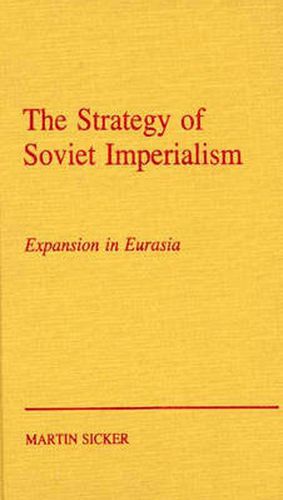Readings Newsletter
Become a Readings Member to make your shopping experience even easier.
Sign in or sign up for free!
You’re not far away from qualifying for FREE standard shipping within Australia
You’ve qualified for FREE standard shipping within Australia
The cart is loading…






The USSR’s different spheres of influence each present their own special problems. This is particularly true of areas outside Eastern Europe and areas non-contiguous with the borders of the USSR. Sicker defines and clarifies the two major Soviet perceptions of policy that radically differ from most western perspectives: patience with long-term policy, and the belief that class struggle law is of primary importance, superseding even international law. The first part of the book considers the pattern and process of expansion that has created the USSR’s current configuration in Eurasia. The chapters demonstrate that in many respects, Soviet policies are similar in objective to their Czarist forerunners. Part II addresses current problems in Soviet geostrategic politics and includes discussions on their evolution and the necessity of their solution in order to preserve the viability of the USSR’s spheres of influence.
$9.00 standard shipping within Australia
FREE standard shipping within Australia for orders over $100.00
Express & International shipping calculated at checkout
The USSR’s different spheres of influence each present their own special problems. This is particularly true of areas outside Eastern Europe and areas non-contiguous with the borders of the USSR. Sicker defines and clarifies the two major Soviet perceptions of policy that radically differ from most western perspectives: patience with long-term policy, and the belief that class struggle law is of primary importance, superseding even international law. The first part of the book considers the pattern and process of expansion that has created the USSR’s current configuration in Eurasia. The chapters demonstrate that in many respects, Soviet policies are similar in objective to their Czarist forerunners. Part II addresses current problems in Soviet geostrategic politics and includes discussions on their evolution and the necessity of their solution in order to preserve the viability of the USSR’s spheres of influence.